Facility ⑤ See the translation for [History of Marimo in Lake Akan and Other]
Marimo Exhibition Center in Lake Akan, Kushiro
Title
Historical events surrounding the Marimo
The Marimo is like a mirror reflected the history of humans lived in Akan.
The Marimo has faced many difficulties for the long time before the rapid economic growth period (from 1955 to 1965) in which peoples struggled between industrial development and environmental conservation.
When considering researches, tourism and development in Akan, we have always discussed about the management of Marimo.
During this period, local residents had continued persistent efforts and activities to protect and conserve the Marimo.
The progress of scientific knowledge has made changing the recognition of Marimo as from the "mysterious symbol" to the "environmental conservation symbol", and to the "biodiversity symbol" of Lake Akan.
Still, the unchanging fact for the residents is that the Marimo is an absolute symbol that represents the uniqueness of Akan.
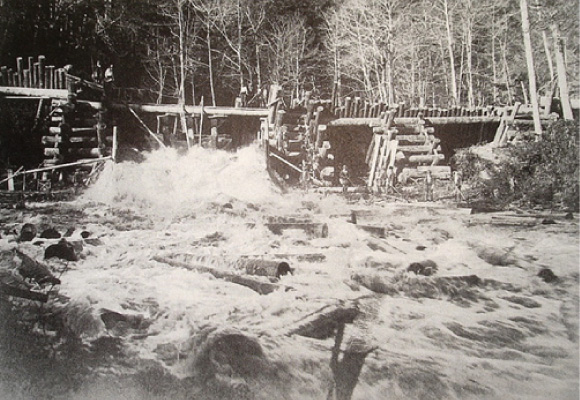
- Photograph①
The Akan River supports local industries as the transportation route for lumber (from mid-1860s to early 1920s) and the resource for hydropower generation (after early 1900s). 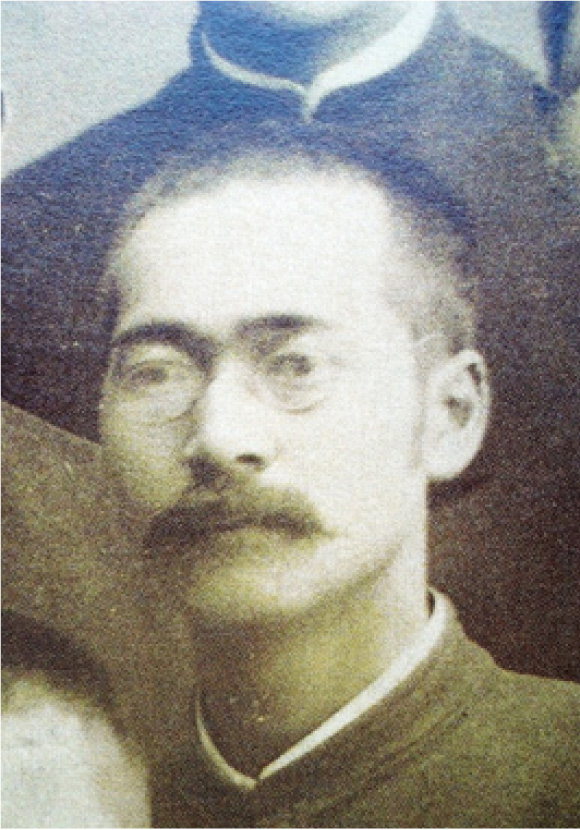
- Photograph②
Mr. Takiya Kawakami, the first person to discover the Marimo and the first director of the National Taiwan Museum.
He collected spherical green algae from Shurikomabetsu Bay of Lake Akan in 1897, and released the Japanese name of this green alga as "Marimo" in a botanical Journal published in 1898.
The Marimo in Shurikomabetsu Bay disappeared around 1941 due to the accumulation of muds on lakebed caused by timber transportation through inflowing rivers. 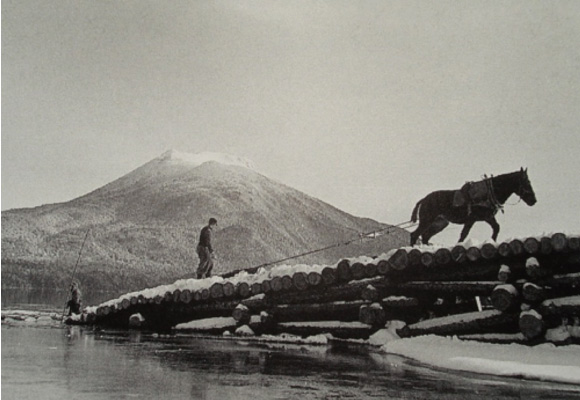
- Photograph③
High quality lumbers were transported via lake Akan. (1952)
(Photo provided by the Maeda Ippoen Foundation) 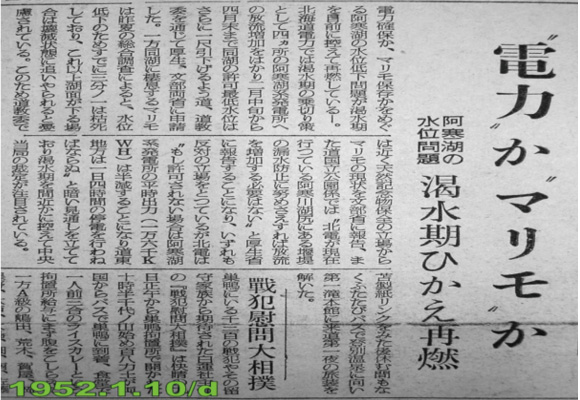
- Photograph④
“Electricity” or “Marimo”; the newspaper reported how the local peoples should connect with nature. (1952) 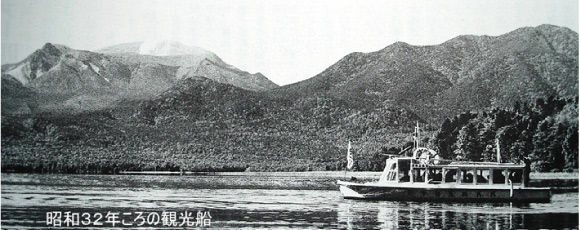
- Photograph⑤
Pleasure boats were entering into Marimo habitat at Churui Bay around 1957.
A Marimo observation facility was newly placed on Churui Island in 1961 due to a voluntary restriction on entering pleasure boats into this area 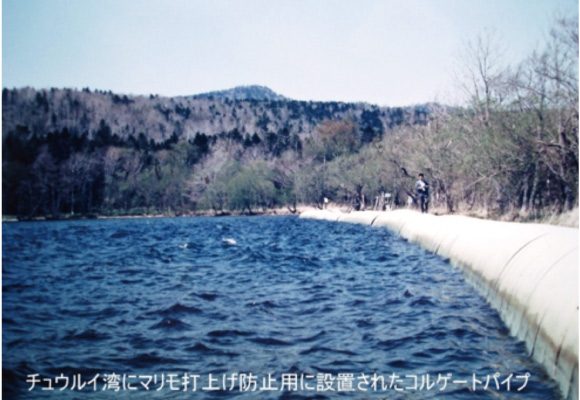
- Photograph⑥
A levee was installed at Churui bay in order to prevent that Marimo was washed ashore (1962). At that time, local people had thought that Marimo was exposed to natural hazards. However, this situation is currently recognized as a part of the life cycle of Marimo. While a large portion of the levee was removed in 1978, a small portion of it still remains today. 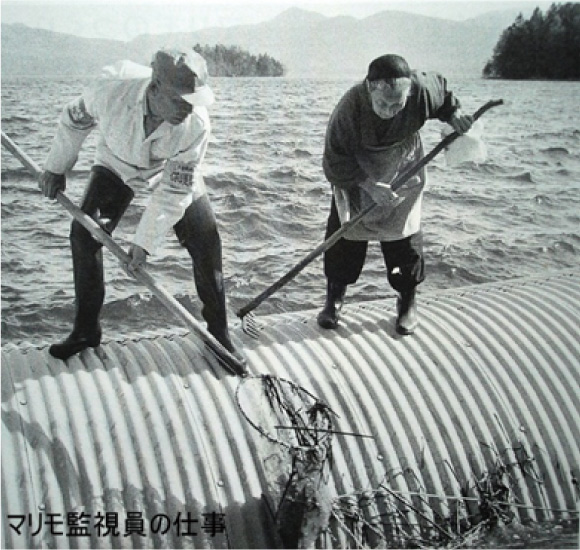
- Photograph⑦
Watchmen stationed at Marimo security cottage on Churui Bay are returning the Marimo that floated over the levee to the lake. 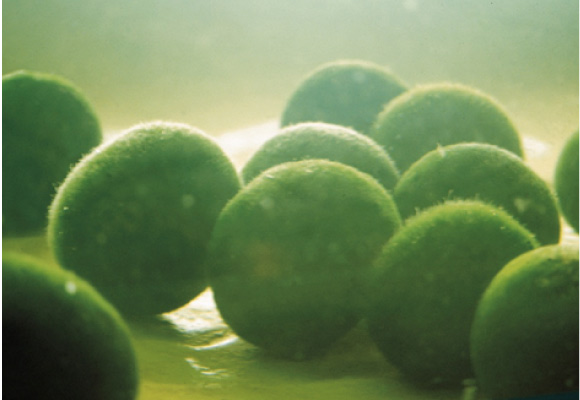
- Photograph⑧
Elementary and junior high school students in Akanko-onsen town participate the event of observing Marimo habitat and gain a better understanding of the Marimo.
Local residents hope that some of them will grow up to be Marimo researchers in the future.


